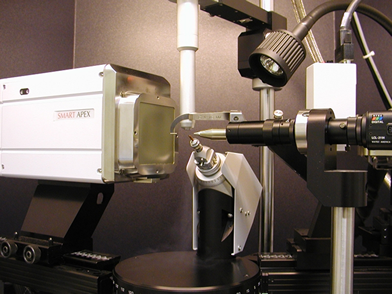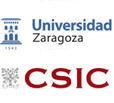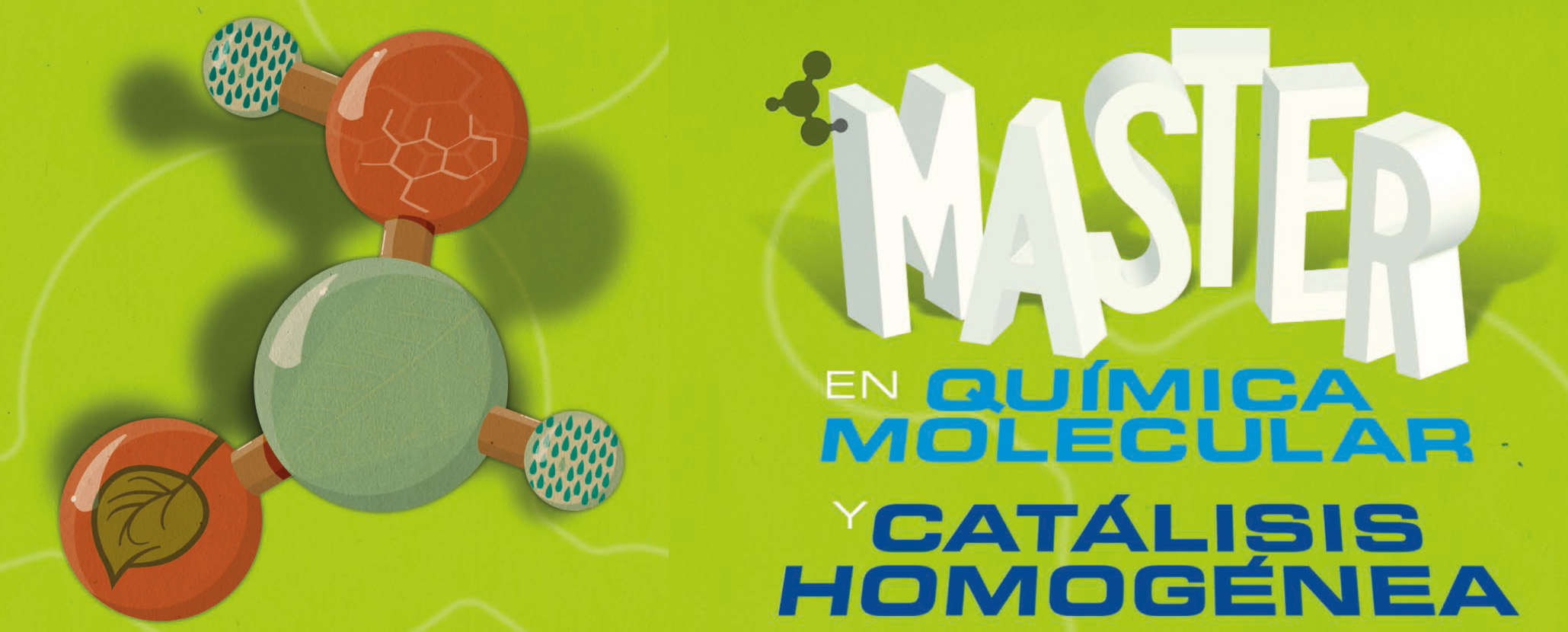X-RAY DIFFRACTION SERVICE
INTRODUCTION
Structural analysis based on single crystal X-ray diffraction is the most powerful technique for the determination of molecular and solid state structure, and for the characterisation of molecular geometry and intermolecular interactions.
The X-Ray Diffraction Service (SDRX) provides infrastructure for structural analysis using single crystal samples above 10-20 microns. Measurements can be performed at low temperatures (range 300-27 K) to improve chemical or crystalline sample stability, or to reduce structural problems associated with disorder situations. The availability of radiation sources with different wavelengths (Copper, Molybdenum or Silver) ensures the optimisation of data acquisition for any type of organic, inorganic or mixed material.
The Service is able to perform both the proper measurement by expert technical staff in optimal conditions, and the subsequent processing of data to get the detailed description of the molecular structure. When the sample characteristics do not allow a proper intensity measurement, the Service could provide technical assistance to carry out data collection on synchrotron radiation sources.
The Service also offers the possibility to carry out crystalline symmetry studies, unit cell parameters determination or the identification of known substances by comparison with structural databases (ICSD or CSD).
EQUIPMENT
 Sample preparation laboratory, equipped with a binocular microscope, gas extractor and refrigerator-freezer (-20ºC).
Sample preparation laboratory, equipped with a binocular microscope, gas extractor and refrigerator-freezer (-20ºC).- 3-circles single crystal Bruker SMART-APEX diffractometer. Molibdenum radiation. CCD APEX area-detector. D8 goniometer with fixed kappa angle. Kryoflex cryostat based on open-flow N2 gas for low temperature measurements (≥ 90 K).
- 4-circles single crystal Bruker APEX DUO diffractometer. Molibdenum sealed-tube (λ=0.71073 Å) and Cooper microsource (λ=1.5418 Å). N-Helix (Oxford Cryosystems) cryostat allowing working at temperature as low as 27 K by switching between nitrogen and helium gas (depending on required temperature).
APPLICATIONS
- Molecular structure determination (molecular parameters and intermolecular interactions characterisation), with direct application in the establishment of structure/property or structure/reactivity relationships.
- Estimation of dynamic characteristics of some process from variable temperature measurements.
- Accurate description of molecular electron density with access to quantitative characterisation of chemical bonds and interactions.
- Precise characterisation of absolute configuration of enantiopure samples.
- Identification of known substances from the unit cell parameters (ICSD or CSD Structural Databases).










